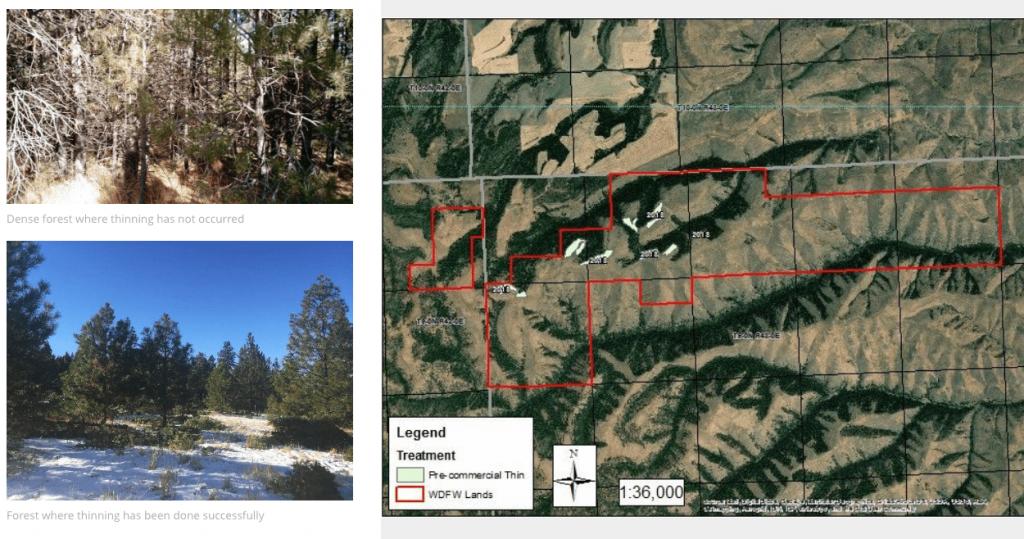
Forest Thinning Project Could Impact Deer Hunting On Asotin-Garfield Co. Wildlife Area
THE FOLLOWING IS A PRESS RELEASE FROM THE WASHINGTON DEPARTMENT OF FISH AND WILDLIFE
Hunters who hunt the Weatherly Unit of the Asotin Creek Wildlife Area in southeast Washington may want to make alternative plans for the general firearm deer hunting season opening soon. While the area is still open to public access, a forest restoration logging operation is currently underway that could impact hunters’ chances at success.

Logging to thin the forest will happen Monday through Friday during daylight hours through the end of October. The operation had been scheduled to be complete prior to the opening of the hunting season, but fire restrictions delayed the work. Land managers are moving ahead with the restoration work so that the area is more resilient to wildfire and, as a result, better able to provide quality fish and wildlife habitat in future hunting seasons.
There are some alternative hunting areas in the region for those who may be displaced by this work.


“The three thousand acre Weatherly Unit is a relatively small piece to the overall Asotin Creek Wildlife Area,” said David Woodall, Assistant Wildlife Area Manager. “Hunters still have all that access, as well as adjoining U.S. Forest Service lands to use.”
For help finding places to hunt, go to WDFW’s Places to go hunting web page.
“We are asking hunters to plan ahead and apologize for any inconvenience,” said Woodall. “It’s important work to protect these lands while also reducing the wildfire risks for local communities and recreationists.”

WDFW actively manages approximately 1 million acres of land and over 500 water access sites across the state to preserve natural and cultural heritage, provide access for hunting, fishing, and wildlife-related recreation, and to foster experiences and exploration for thousands of Washingtonians and visitors each year.
